Throughout the natural world – in corals, cactuses, sea-slugs and lettuce leaves – we see swooping, curving and crenelated forms. All these are biological manifestations of hyperbolic geometry an alternative to the Euclidean geometry we learn about in school. While nature has been playing with permutations of hyperbolic space for hundreds of millions of years, human mathematicians spent centuries trying to prove that such forms were impossible.
The discovery of hyperbolic geometry in the nineteenth century helped to usher in a mathematical revolution, giving rise to new ways of mapping and analyzing curved surfaces. Such “non-Euclidean geometry,” now underlies the general theory of relativity and thus our understanding of the universe as a whole.
If the cosmos may be a hyperbolic manifold, at the molecular level carbon atoms can assemble into hyperbolic lattices, giving rise to exotic new materials. Meanwhile, on the Great Barrier Reef, the corals making hyperbolic structures are being threatened by global warming and the human deluge of carbon into our oceans.
In this multifacted talk bridging the domains of mathematics and culture, science writer and exhibition curator Margaret Wertheim discusses the story of hyperbolic space. How do hyperbolic forms arise in nature, in technology, and in art? And what might we learn about alternative possibilities for being from a mathematical discovery that redefined our concept of parallel lines.
About the speaker
Margaret Wertheim is an internationally noted science writer and exhibition curator whose work focuses on relations between science and the wider cultural landscape. The author of six books, including The Pearly Gates of Cyberspace, a groundbreaking exploration of the history of Western concepts of space from Dante to the Internet, she has written for the New York Times, Los Angeles Times, The Guardian, and many other publications. She is a contributing editor at Cabinet, the international arts and culture journal, where she often writes about mathematics.
Wertheim is the founder and director of the Institute For Figuring, a Los Angeles-based organization devoted to the aesthetic and poetic dimensions of science and mathematics. (www.theiff.org) Through the IFF, she has designed exhibitions for galleries and museums in a dozen countries, including the Hayward Gallery in London and the Smithsonian’s National Museum of Natural History in Washington D.C. At the core of the IFF’s work is the concept of material play, and a belief that abstract ideas can often be embodied in physical practices such as paper folding and crochet. By inviting audiences to play with ideas, the IFF offers a radical approach to maths and science engagement that is at once intellectually rigorous and aesthetically aware.
The IFF’s “Crochet Coral Reef” project, spearheaded by Margaret and her twin sister Christine – is now the largest participatory science-and-art endeavor in the world, and has been shown at the Andy Warhol Museum (Pittsburgh), Science Gallery (Dublin), New York University Abu Dhabi (UAE), and elsewhere. Through an unlikely conjunction of handicraft and geometry, the Crochet Coral Reef offers a window into the foundations of mathematics while simultaneously addressing the issue of reef degradation due to global warming. Wertheim’s TED talk on the topic has been viewed more than a million times, and translated into 20 languages, including Arabic.
In 2012 Wertheim served as the University of Southern California’s inaugural Discovery Fellow, designing participatory programming that engaged students across the campus from science, engineering and arts faculties. A highlight of the project was building a giant model of a fractal out of 50,000 business cards. Wertheim is currently Vice Chancellor Fellow for Science Communication at the University of Melbourne.


